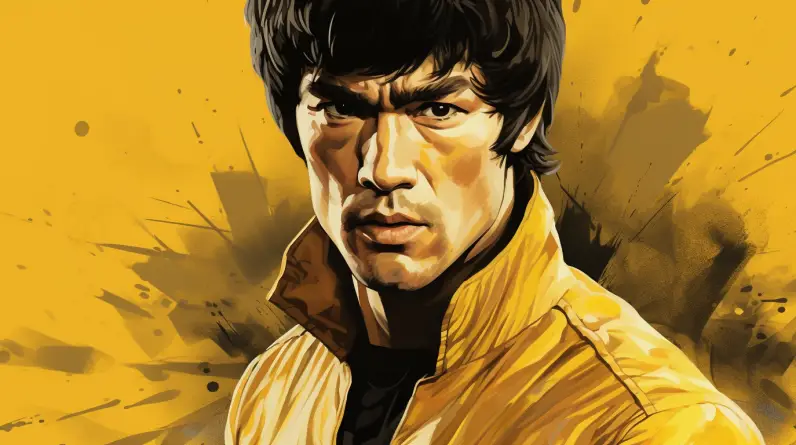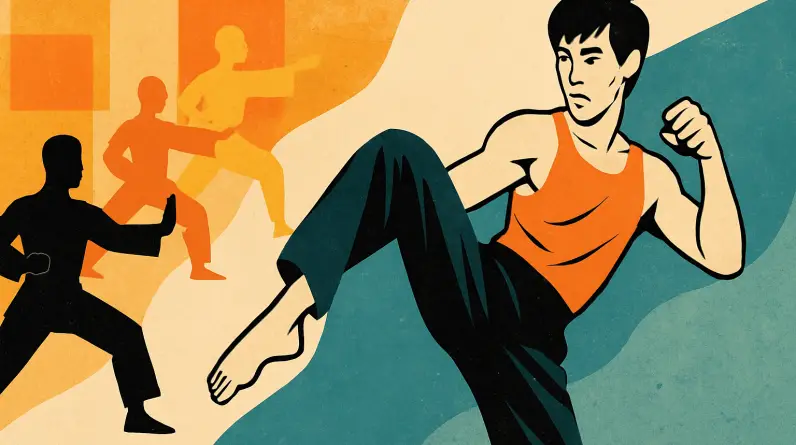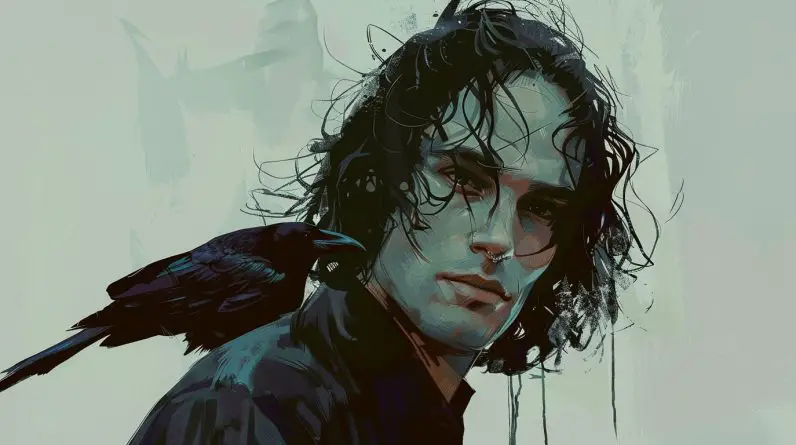
In the pantheon of martial arts cinema, Bruce Lee stands tall, despite his career being tragically cut short. Among his body of work, Game of Death occupies a unique and somewhat enigmatic place. It is a film as famous for what it could have been as for what it ultimately became. The story behind Game of Death is one of ambition, tragedy, and the quest for martial arts’ cinematic perfection cut short.
Prelude to the “Game”
The origins of Game of Death date back to the early 1970s when Bruce Lee was at the height of his powers. Having already established himself as a martial arts icon with films like The Big Boss (1971), Fist of Fury (1972), and Way of the Dragon (1972), Lee sought greater control over his films and a platform to showcase his philosophy of Jeet Kune Do, a martial arts system he founded.
Conception of a Vision
Lee envisioned Game of Death as more than just another action movie. He wanted to create a film that would serve as an allegory for his martial arts philosophy. The plot revolved around a retired champion martial artist (played by Lee) who must ascend a five-level pagoda, facing a different challenger, each with a unique fighting style, on each floor. The climactic battles were meant to illustrate Lee’s belief in the importance of adaptability in martial arts.
Filming Begins
Production began in 1972, and Lee filmed roughly 100 minutes of footage, including fight scenes with Dan Inosanto, Ji Han-Jae, and Kareem Abdul-Jabbar. Each scene was meticulously choreographed to demonstrate Lee’s incredible speed, precision, and charisma. However, production was halted when Lee received an offer he couldn’t refuse – the lead role in Enter the Dragon, the first-ever US-Hong Kong co-production, and a project that promised to catapult him to global stardom.
An Untimely Tragedy
Tragically, Bruce Lee would never see Enter the Dragon released or resume filming Game of Death. On July 20, 1973, Lee died from cerebral edema, a swelling of the brain. The world was shocked and bereft of one of its most dynamic film stars. Game of Death remained unfinished, with only those scenes that Lee had completed serving as a testament to what the film might have been.
Posthumous Puzzle
After Lee’s death, the film industry was left scrambling to capitalize on his legacy. In 1978, director Robert Clouse, who had directed Enter the Dragon, was brought in to complete Game of Death. Clouse had to work with only 11 minutes of Lee’s original footage and crafted a new storyline that only tangentially related to Lee’s original concept. Using stand-ins and even cardboard cut-outs of Lee for certain scenes, the result was a film that bore little resemblance to what Lee had intended.
Release and Reception
Game of Death was released in Hong Kong on 23 March 1978 and in the United States later that year. Audiences flocked to theaters, driven by a combination of Lee’s legacy and a fascination with the film’s troubled history. While it was a commercial success, the critical reception was mixed. Some praised the innovative action sequences Lee had filmed, but many were disappointed by the obvious use of doubles and the departure from Lee’s original vision.
The film’s release was also mired in controversy, with accusations that the producers had exploited Lee’s death for profit. The completion of the film without Lee’s guiding vision was seen by some as disrespectful to the late star’s memory.
Legacy of “Game of Death”
Despite its troubled production and the mixed critical reception, Game of Death has a lasting legacy in the martial arts film genre. The iconic yellow tracksuit worn by Lee has been referenced in numerous films, including Quentin Tarantino‘s Kill Bill series. The concept of a martial artist ascending levels to face tougher opponents has been emulated in various forms of media, from video games to other movies.
The footage that Lee filmed is often regarded as some of the best fight scenes in cinema, showcasing his incredible martial arts skills and his unique philosophy. For fans and scholars, these scenes represent a glimpse into what could have been one of the greatest martial arts films of all time.
The saga of Game of Death is a poignant chapter in the story of Bruce Lee’s remarkable but all-too-brief life and career. It stands as a reminder of the unfulfilled potential of a man who was not only a film star but a martial arts innovator. Game of Death endures as both a monument to Lee’s enduring appeal and a bittersweet reminder of the masterpiece that might have been.






